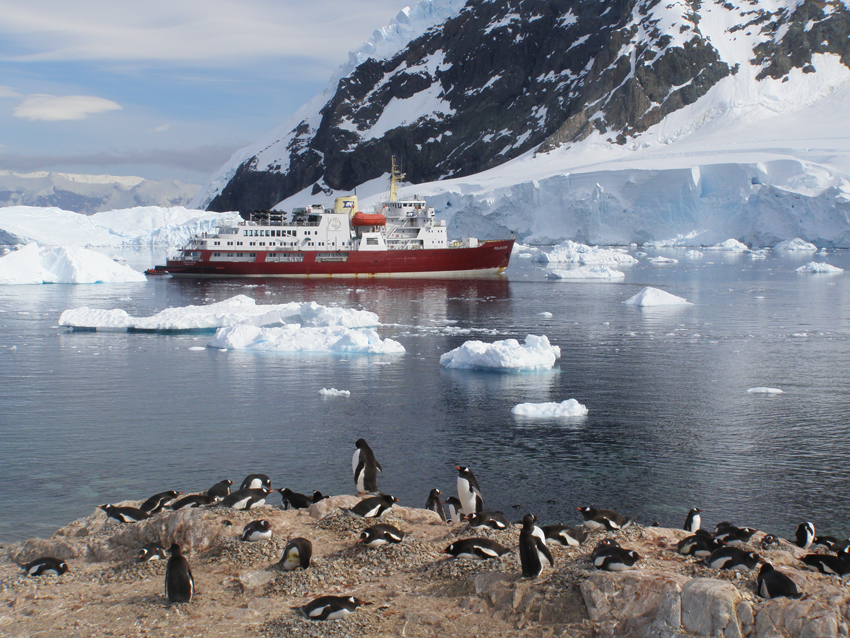Last Updated on April 6, 2023 by PowersToTravel
If you are fortunate enough to have the opportunity to go to Antarctica, don’t let being diabetic stop you. Preparing for, and going on a trip to Antarctica is no more difficult than on an African safari. Hmmm, you may not have gone on an African safari yet, so perhaps the comparison isn’t helpful. Going on a trip to Antarctica is no more difficult than going to Iceland? You be the judge…

Yes, you will be in an isolated location, but if you are on an adventure cruise, as I was, there’ll be a doctor on board the ship, access to medi-vac chopper services, and a hospital in the South Shetland Islands.
Travel Insurance with Medical Evacuation
The key is that you must have travel insurance that covers high cost medical evacuation. Most tour operators require you purchase a certain level of evacuation insurance prior to letting you board the ship.
So, with your mind at rest, you can be free to enjoy all of the unique and new experiences in Antarctica.
Oh, there’s more planning you need to do? Yes, indeed, there’s always planning involved if you’re a diabetic. Read on…
I’ve written a soup-to-nuts article about Diabetic Travel Tips for International Travel. Check it out!
Vaccines and Travel Clinics
The great thing is that there aren’t diseases to catch from the glaciers and brash ice. The important thing is to realize that you are probably traveling a very great distance, by air, to get to the ship, and that you’ll be traveling probably in the Northern Hemisphere’s cold season, which means the flu season.
Be sure to get your flu shot in plenty of time before your trip so as recover from any unfortunate reactions, and have full immunity for the trip. Antarctica is a very high priced dream and you don’t want to catch the flu and ruin it!
Flying with Diabetes
Yes, you’ll be flying, as I said, probably a very great distance. Check out the “Flying with Diabetes” section of my Diabetic Travel Tips for International Travel for all of my lessons learned.
Activity Levels
A trip to Antarctica is less energy-intensive than a self-guided train trip in Europe or Japan, (I know!) however the rugged landscape can be unexpectedly challenging. It’s one thing to sit around despondently at home, with a low-blood sugar, waiting for it to pop up again, and miss a walk. It’s a totally different feeling to have a low blood sugar which stops you from an activity, and that activity is a hike to see a harem of fur seals.
On one occasion, on Aitcho Island, we had wandered around for a while and my blood sugar fell. I immediately treated it with glucose tablets and granola bars. We wandered more, and my blood sugar fell again, what the %&&%#? Next we were to hike to the top of a ridge to hike down to see the huge bunch of elephant seals, my blood sugar was toast and I had consumed all of my supplies. I was forced to wait a long time at the top of the ridge, gazing down at the elephant seals in the distance, knowing I didn’t have enough supplies to treat me if it fell again, and that I would need to climb back up. This one moment taught me the value in always bringing along an entire container of glucose tablets in my backpack on special adventures.
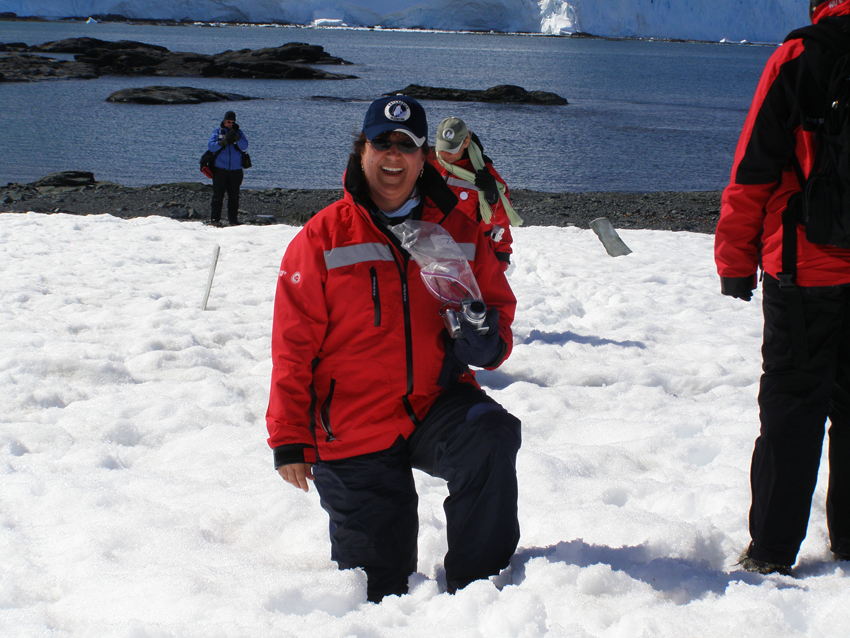
Hiking in December in Antarctica can be a challenge and use up a lot of energy
Keeping Insulin Warm while traveling
Usually one worries about keeping one’s insulin cold, but in Antarctica you need to be careful to keep it warm. It was not difficult for me as I wear a pump, so as long as I keep the pump under the parka, or next to my skin, I don’t have to worry about chill winter weather.
Which brings up another concern:
Always carry enough insulin for several days when landing in Antarctica
Our guides were quite clear in their instructions to us: Always approach each landing as if you may not be able to return to the ship that day. With every outing entire zodiacs would land first, full of food and protective supplies for the entire expedition group. One guide’s job was always to supervise the supplies to prevent wildlife from scavenging them, and protect the boats from rising tides.
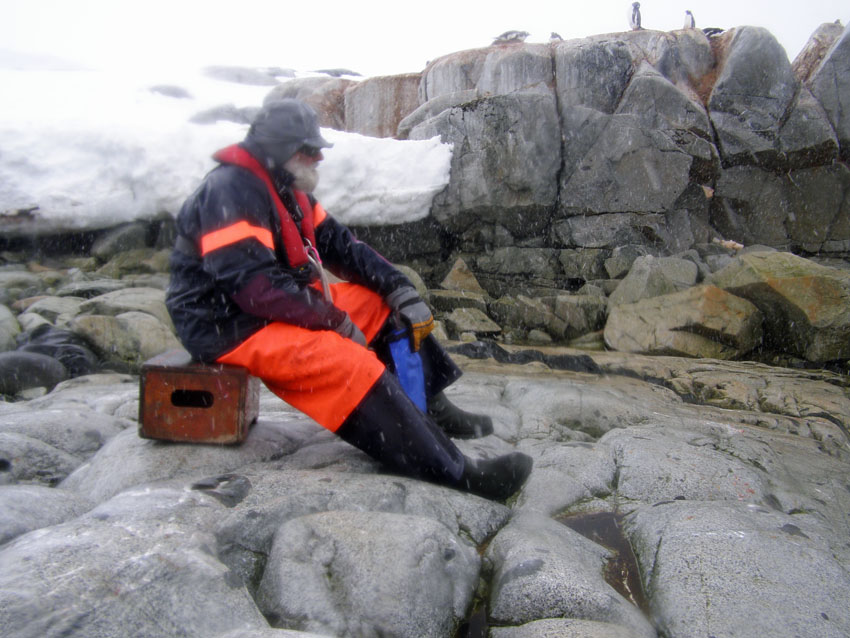
We were also instructed to carry along a change of critical clothing, because you never knew if you might get clothing wet, and need warmth. In our backpacks each outing we carried spare T-shirts, sweaters, gloves and socks.
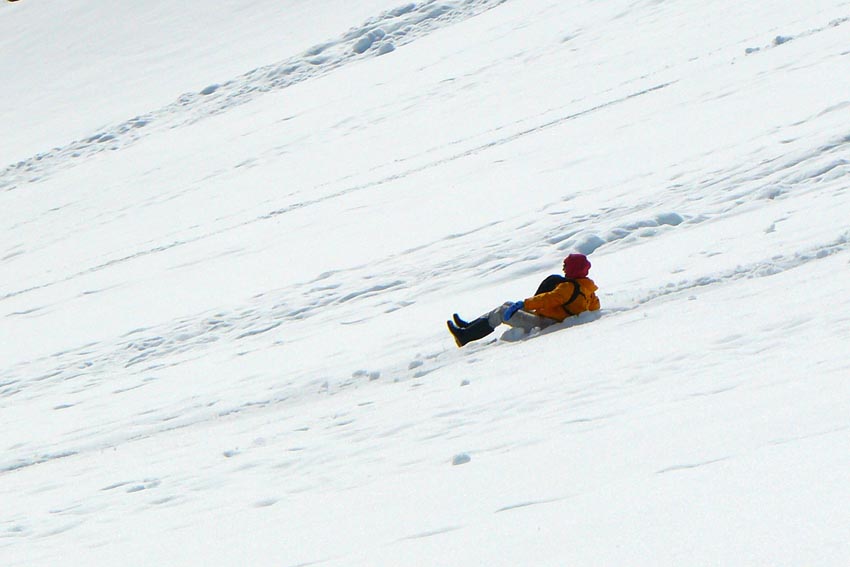
snow went right up the back of my coat all the way to my neck!
But my backpack was special – I also had to carry along enough diabetic supplies for several days, just in case.
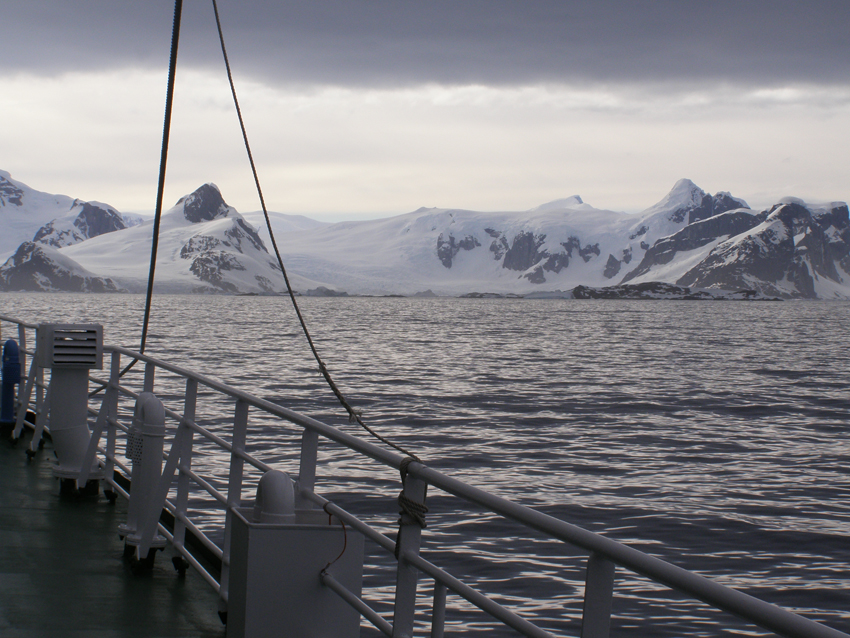
In case of what? In case a storm popped up while we were on land and we were unable to get back to the boat. The tents and supplies brought by the guides would protect the expedition members, and who needs shampoo when you are marooned on Antarctica? But me? I needed sufficient insulin, spare batteries, infusion sets, test strips, etc. My backpack contained clothing and a decent-sized to-go diabetic kit, as well as a supply of granola bars and glucose tablets, not to mention contact lens supplies!
I always made sure my insulin pump reservoir had enough insulin for several days, so that I didn’t need to worry about accidentally freezing a spare bottle in my backpack.
“Don’t bring any food!” we were ordered. “This is a protected environment – no wrappers, no foreign foods, no nothing!” I immediately panic’d about my energy supplies.
Oh, not to worry, as soon as I notified my outing group leader about my diabetes, I could bring anything I needed.
Protecting my insulin and supplies from theft
It was only the penguins we needed to worry about. They are very inquisitive and would try to investigate any camera bag left unattended.
Coping with the diarrhea and vomiting
What? I didn’t have any problems with the food on the expedition. But if I had, then I would have acted accordingly: Traveler’s Diarrhea and Diabetes – how to stop it and quick.
Other tips
Other tips from my Diabetic Travel Tips for International Travel article – Avoiding the Mosquitoes, Bringing along Antibiotics, Packing Long-Acting Insulin and Coping with Hard Beds – all go without saying. There’s nothing special that the Antarctica expedition requires.


